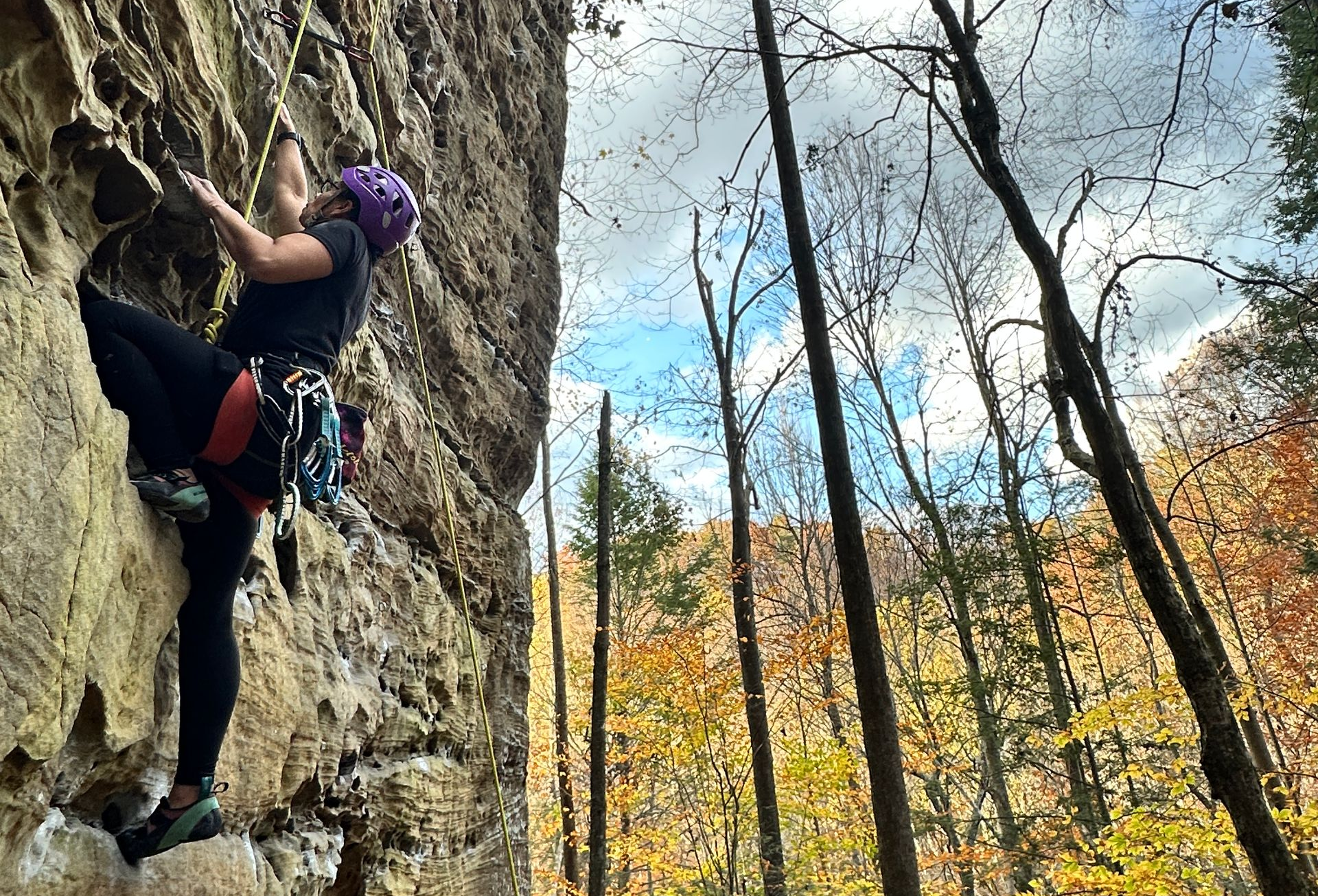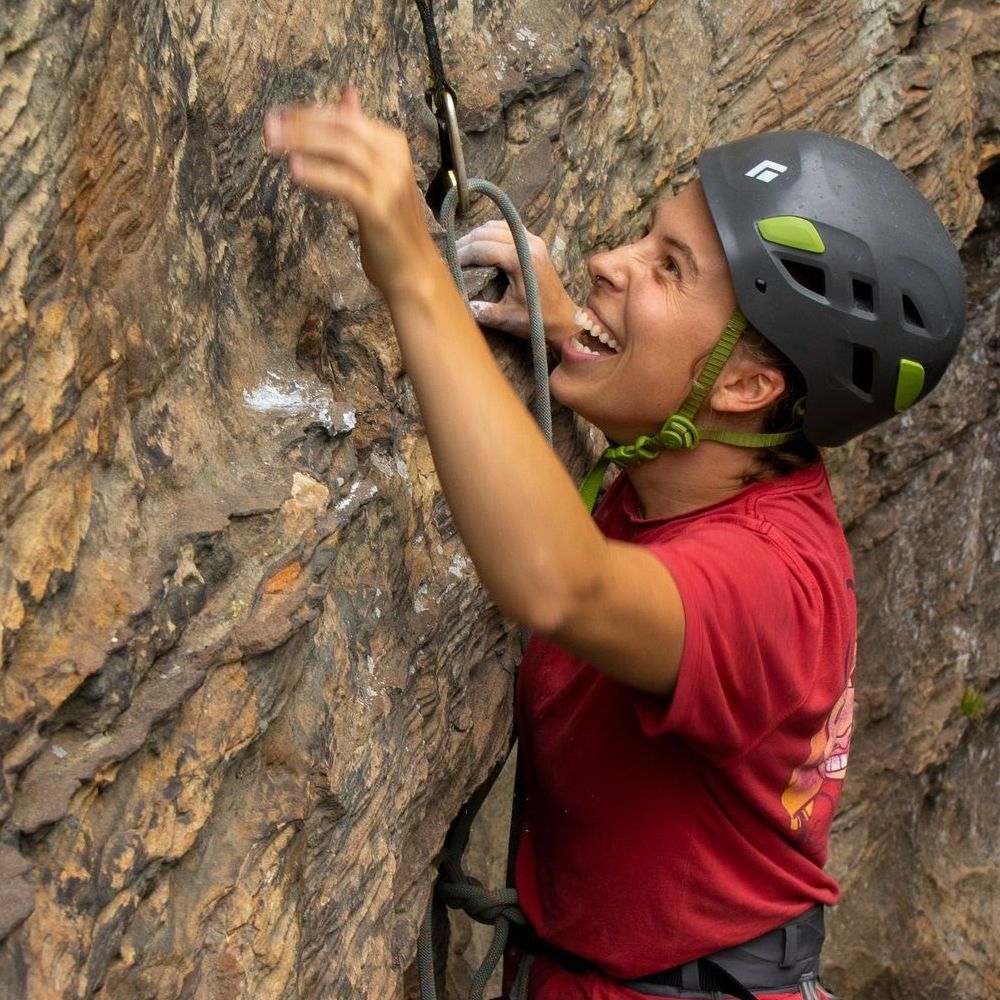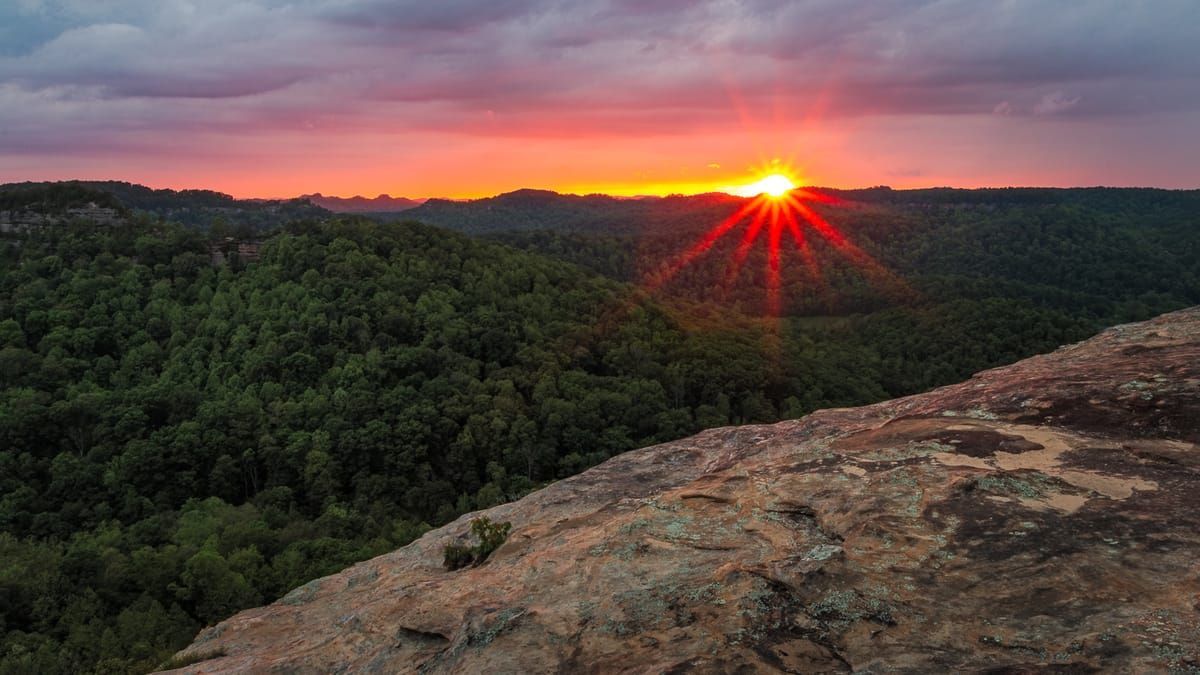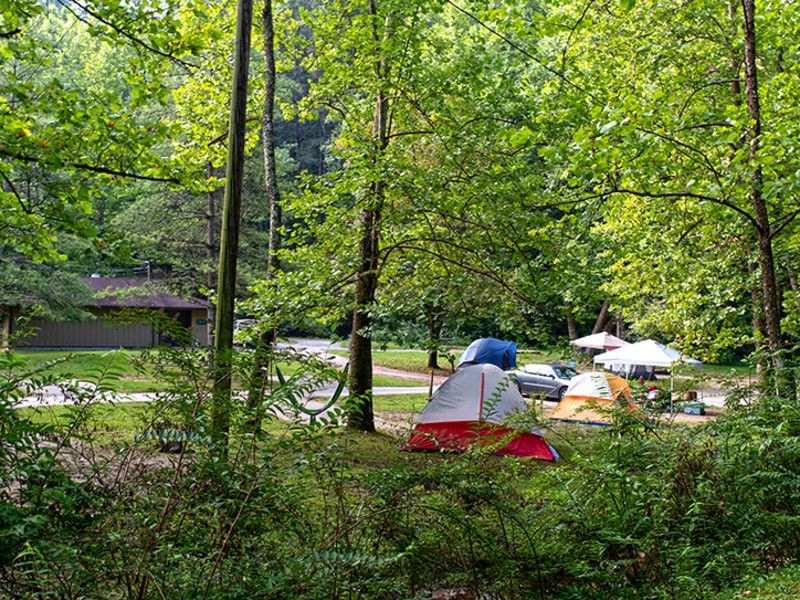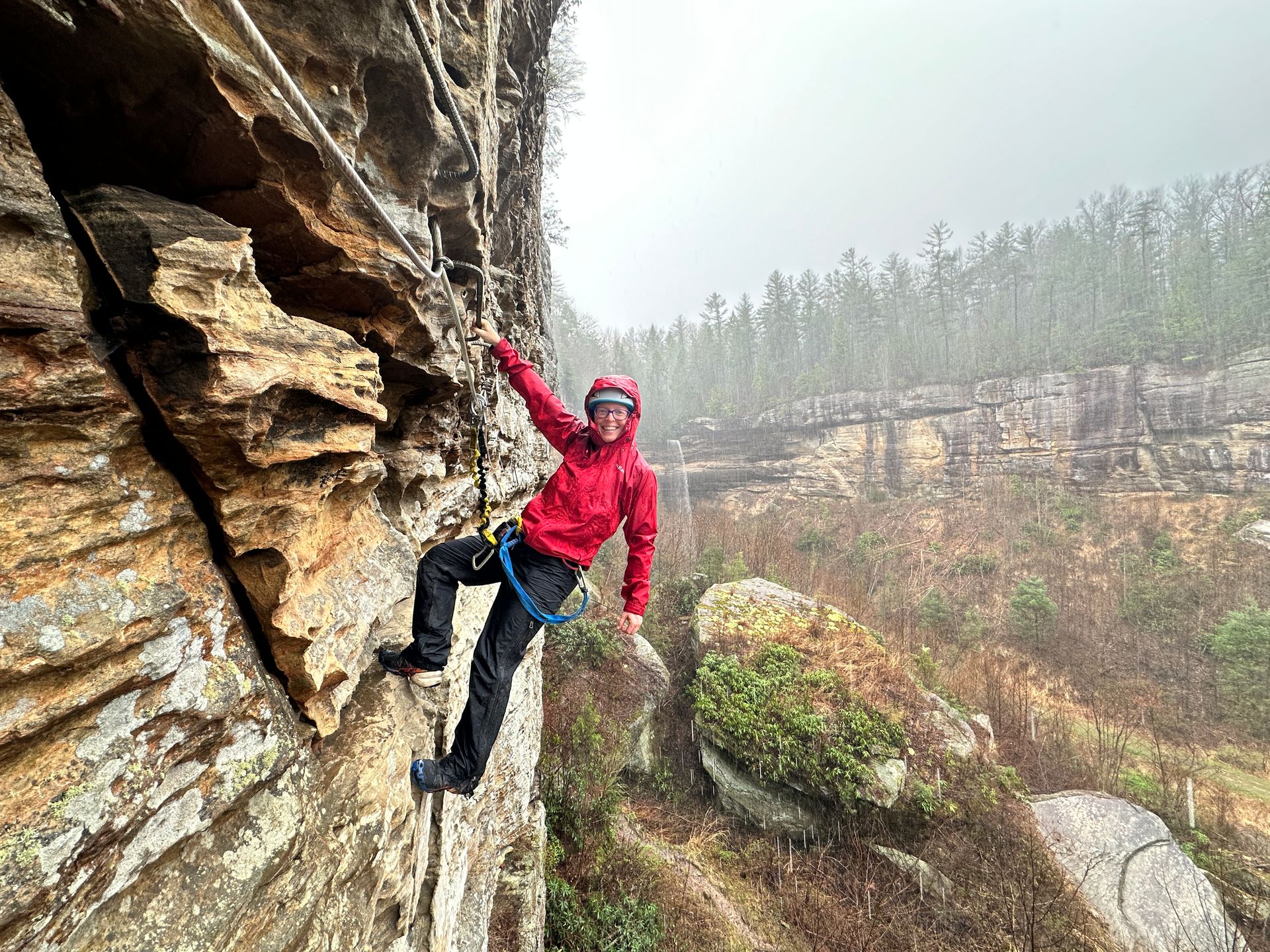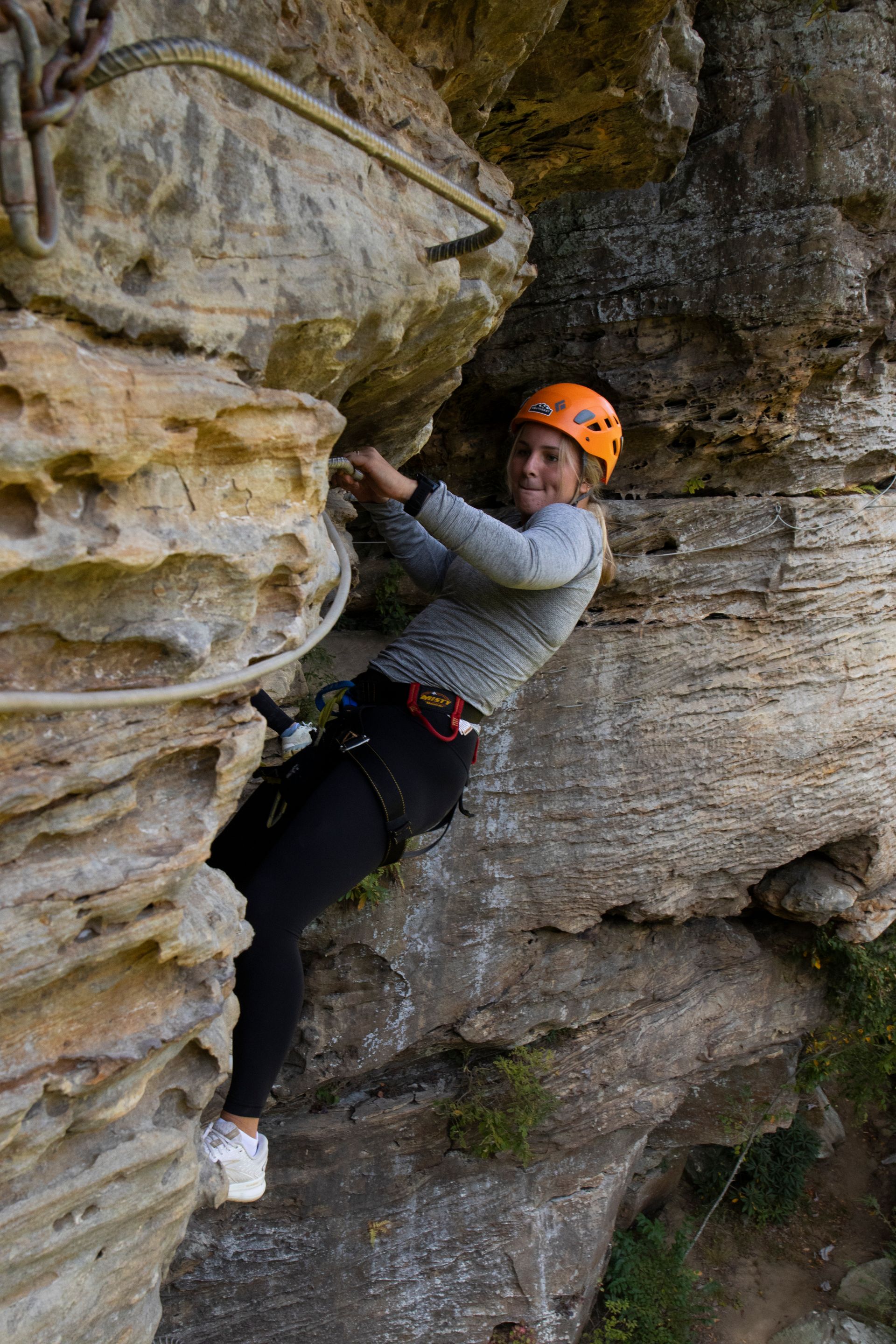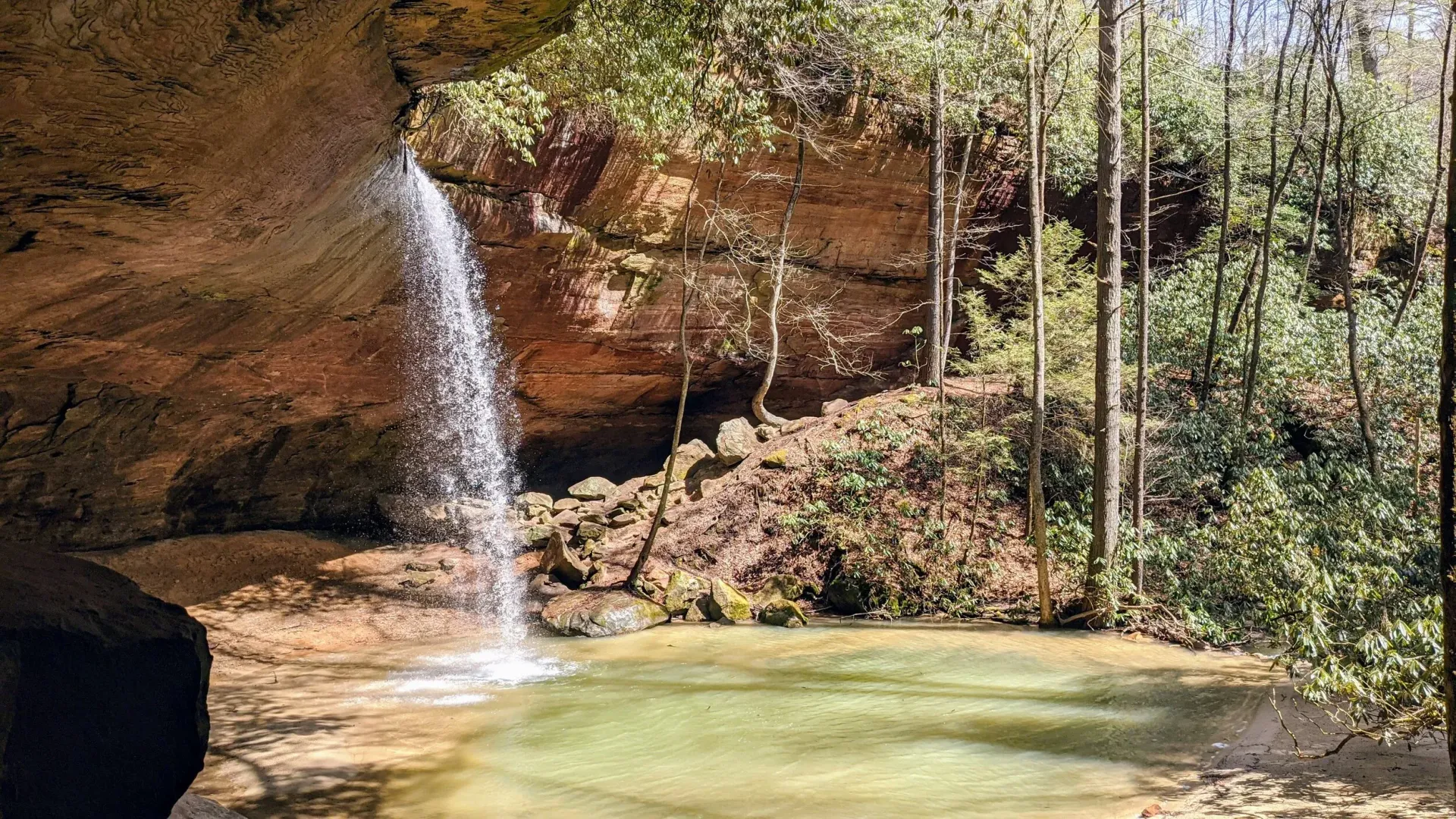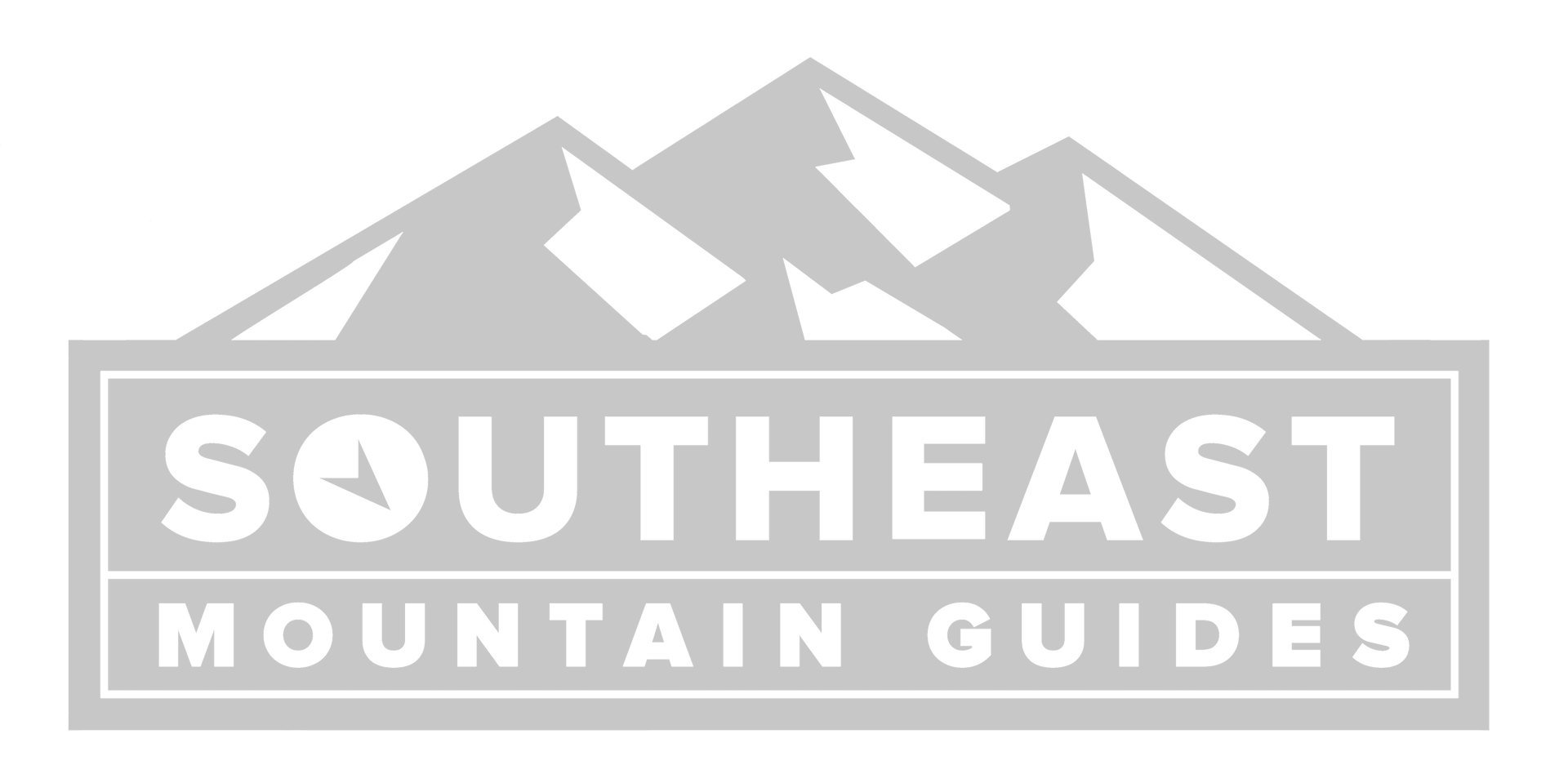From Gym to Crag: Transitioning to Outdoor Climbing at the Gorge
Climbing indoors and outdoors share the same fundamentals, but they are
not the same experience. At the Red River Gorge (RRG), the majority of routes require skills, systems, and preparation that go far beyond what you pick up in the gym. If you’re planning your first outdoor trip, here’s some considerations you need to know.
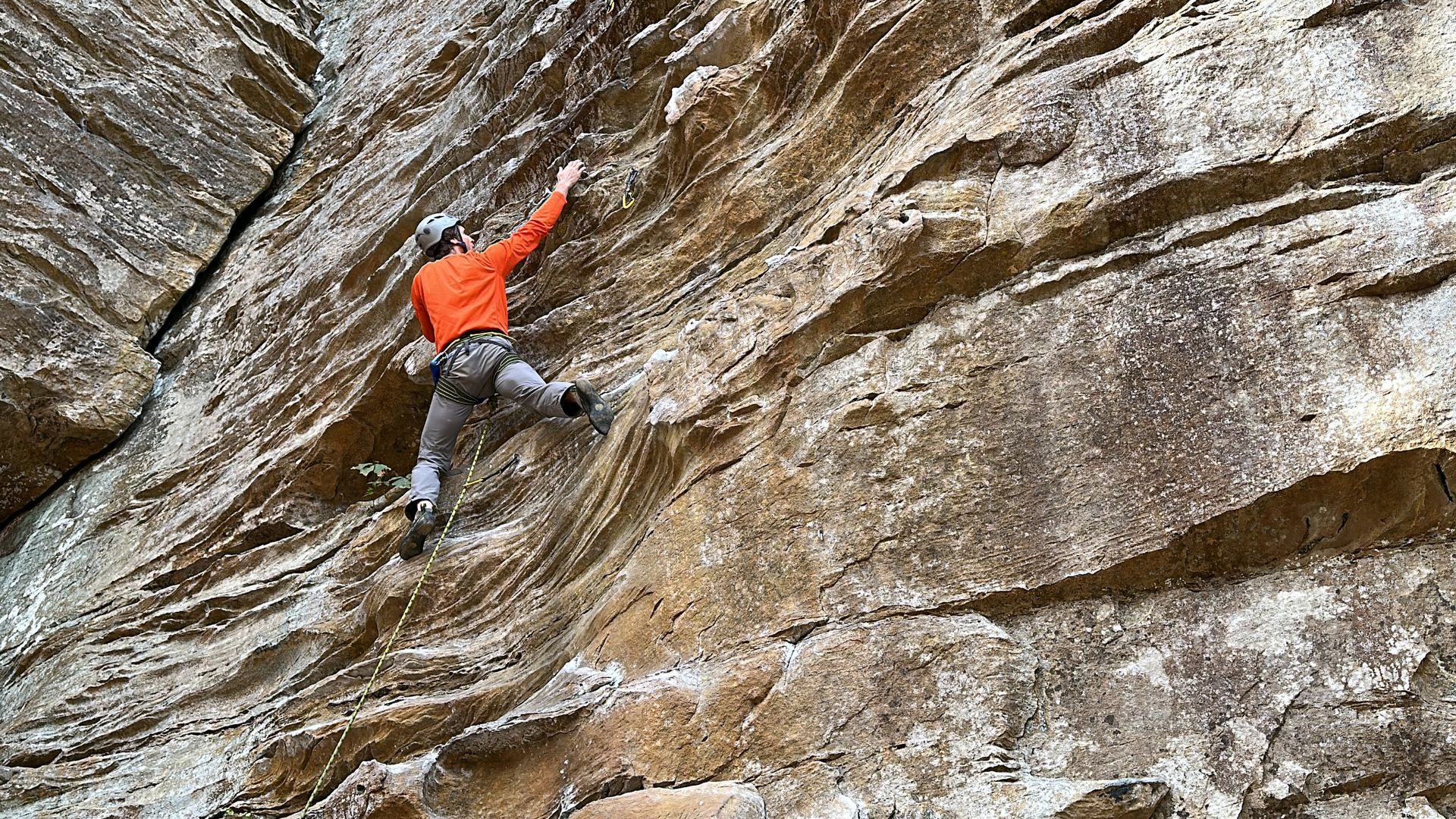
Essential Gear for Outdoor Climbing
Unlike the gym—where you can rent shoes, harness, and ropes—outdoor climbing requires you to
own or rent a complete kit. Outfitters like Southeast Mountain Guides can help with some basics (shoes, helmets, harnesses, stick clips), but most gear you’ll need to provide yourself:
Core gear list:
- Rope + rope bag/tarp
- Harness
- Climbing shoes
- Belay device
- Quickdraws (minimum 10, ideally 12)
- Locking carabiner
- Backpack
Highly recommended:
- Stick clip (commercial or improvised)
- Helmet
- Chalk bag
- Personal anchoring system (PAS) — quickdraws can work in a pinch
Technical Skills & Knowledge
Lead Climbing and Lead Belaying
The vast majority of climbs in the RRG are “from the ground up.” That means you must know how to lead climb and lead belay—or climb with partners who do. Indoor lead practice helps, but outdoor routes introduce unique challenges:
- Belay stances may be sloped, rocky, or obstructed.
- Bolt spacing is irregular—some sections may feel run-out.
- Bolt placement may not line up with “ideal” clipping holds. You’ll need to use natural features for body positioning.
- Hanging your own draws adds effort: unlike gyms with pre-hung draws, you’ll carry and place your own on lead.
Cleaning Routes
This is one of the biggest differences—and where many accidents occur. Cleaning means retrieving your gear and rope from the anchor and descending safely.
- Mussy hooks: Similar to gyms, but best practice is to use your own gear until the last climber to reduce wear.
- Chains/rings: Require untying, threading the rope through permanent hardware, and retie-in—skills that must be taught and practiced carefully.
- Traverses/overhangs: May require advanced techniques (e.g., trolleying) to retrieve quickdraws safely.

Evaluating Hardware
In gyms, staff inspect equipment daily. Outdoors, bolts, anchors, and fixed gear are community-maintained. You’ll need to recognize when hardware is questionable.
Route Reading
Indoor holds are color-coded. Outdoors, holds may be hidden in cracks or pockets, requiring sharper reading and efficient body positioning.
Exposure
Routes outside can be longer, higher, and much more exposed. The mental game—height, air beneath your feet, and bolt spacing—adds difficulty beyond physical climbing.
Logistics of Outdoor Climbing
Climbing at the Gorge isn’t just about the route itself—you have to get there, too.
- Research & Planning: Use guidebooks and Mountain Project. Know your approach trail and route location in advance.
- Access & Parking: Some crags require AWD or 4WD. Otherwise, prepare for longer approaches.
- Approach Hike: Trailheads aren’t marked like gym doors. Expect time spent finding the base.
- Time Management: Outdoors, logistics eat into climbing time. Don’t expect to get in dozens of routes like at the gym. Plan for daylight.
- Communication: Terrain, distance, or wind may cut off line of sight or hearing. Use clear commands, names, and backup plans.
- Weather & Environment: Unlike climate-controlled gyms, you’ll deal with sun, rain, humidity, and slippery rock. Add in insects, snakes, or poison ivy.
Ways to Gain Knowledge & Experience
- Read & Watch: Guidebooks, articles, and instructional videos provide a foundation.
- Climb with Experienced Partners: Learn systems from those with proven outdoor knowledge.
- Hire a Guide: The most direct and reliable way to bridge the gap.
Why Hiring a Guide Makes Sense
- Efficiency: Learn correct systems right away instead of trial-and-error.
- Safety: Get supervised practice in anchors, belaying, cleaning, and rappelling.
- Local Knowledge: Guides know the crags, approaches, and conditions.
- Personalization: Instruction tailored to your goals and current ability.
At
Southeast Mountain Guides, we specialize in private, customized trips. Whether you want to learn anchor cleaning, refine lead skills, or simply experience outdoor movement safely, our guides are here to set you up for success.
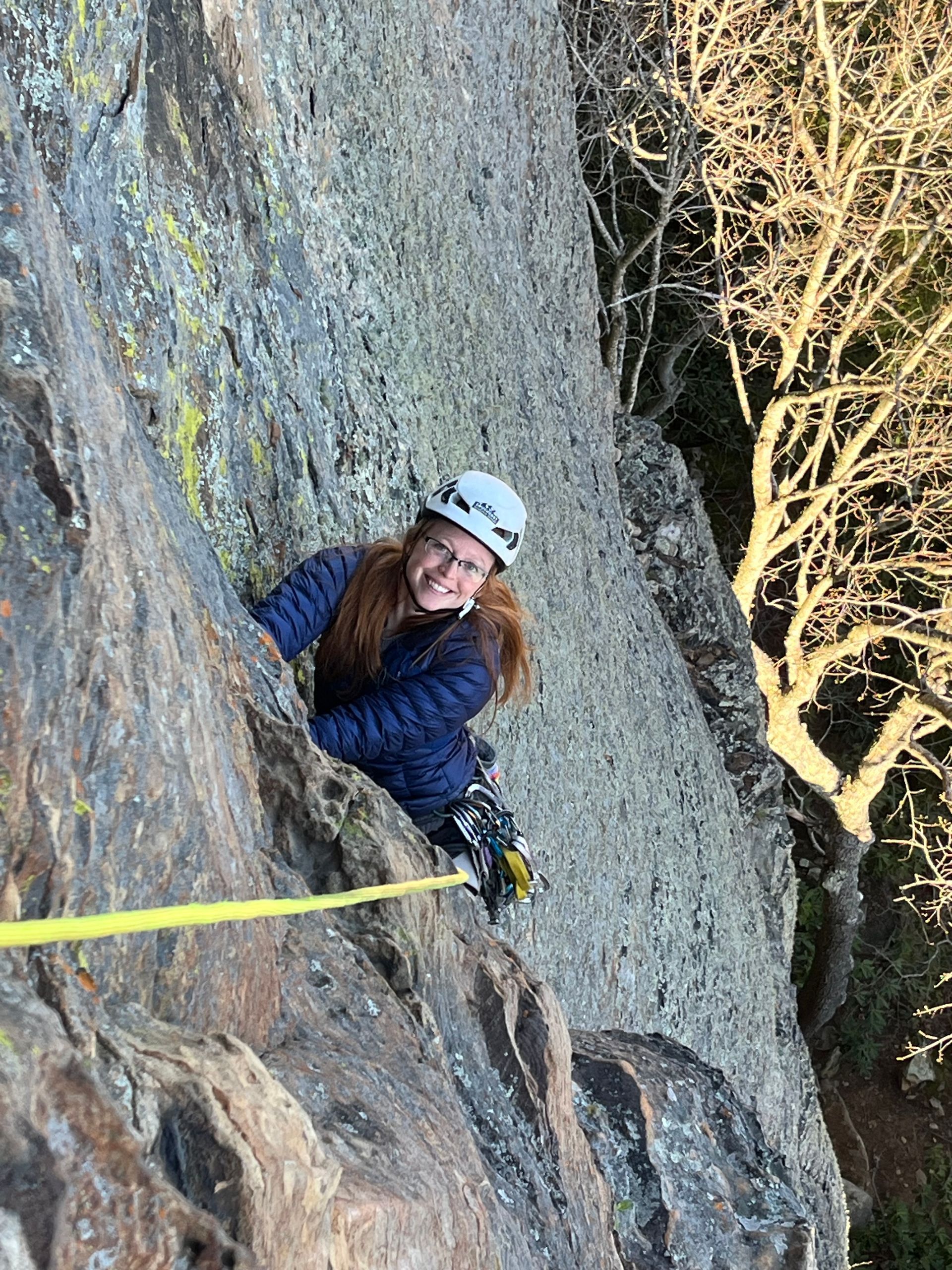
Final Thoughts
Transitioning from gym to crag is a milestone in your climbing journey—but it comes with higher demands in gear, skills, logistics, and risk management. By preparing properly and seeking expert instruction, you’ll unlock the full rewards of climbing at Red River Gorge: world-class sandstone, beautiful surroundings, and the satisfaction of true outdoor climbing.
Ready to make the transition?
Book a guided climbing trip with Southeast Mountain Guides and start your outdoor journey the right way.
